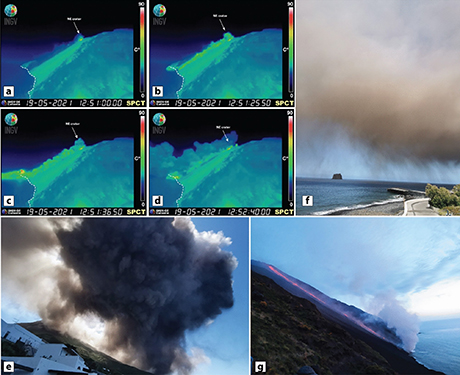Physical and morphological characterization of the 19 May 2021 ash cloud deposit at Stromboli (Italy)

Re G., M. Pompilio, P. Del Carlo and A. Di Roberto (2022).
Sci. Rep., 12, 1–15, https://doi.org/10.1038/s41598-022-14908-1
Abstract
We report on the ash cloud related to the gravitational collapse of a portion of the Stromboli volcano crater rim that occurred on 19 May 2021. The collapse produced a pyroclastic density current (PDC) that spread along the northwest flank of the volcano and propagated in the sea for about 1 km. The PDC was associated with a convective ash cloud that rapidly dispersed eastward and deposited a thin layer (< 1 mm) of very fine pinkish ash over the village of Stromboli. The deposit was sampled shortly after the emplacement (within a few hours) and prior to any significant reworking or re-sedimentation. We present a comprehensive description of the deposit including dispersal, sedimentological characteristics and textural and geochemical features. We also compare the 19 May 2021 deposit with fine-ash deposits connected to other PDCs and landslides previously occurring at Stromboli and with the distal ash of a paroxysmal explosive eruption of Mt. Etna volcano. Results indicate that the distributions of the mass on the ground and of the grain size are not correlated with the distance from the source. Also, the componentry reflects a preponderance of remobilized material ingested by the PDC. Therefore, the great amount of fine ash can be ascribed to clasts comminution processes, although the prevalence of dense crystalline components records an overall equiaxial shape, revealing a paucity of elongated clast with complex morphology. Furthermore, the outcomes of this work aim to create a collection of data of a co-PDC ash cloud that may prove useful for comparison with other deposits worldwide.


Devi effettuare l'accesso per postare un commento.